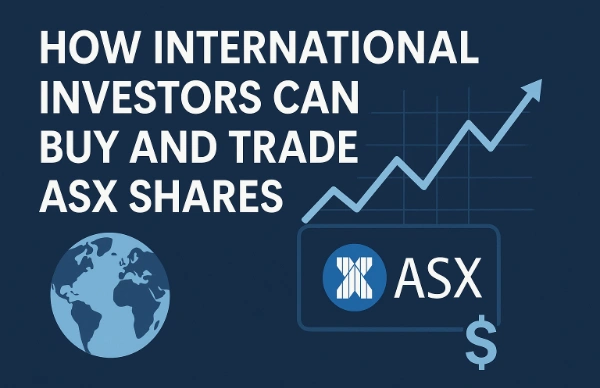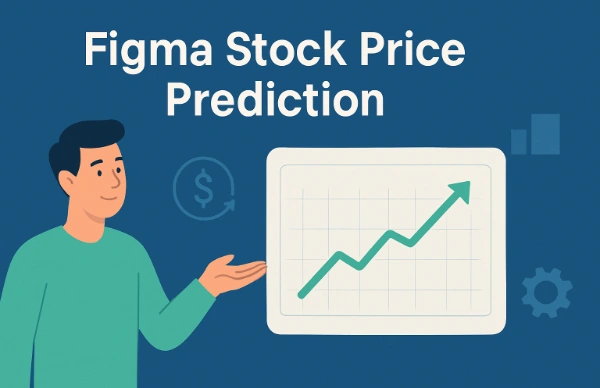Introduction to ASX Trading for US Investors
The Australian Securities Exchange (ASX) represents one of the world’s most robust and stable financial markets, offering US investors unique opportunities to diversify their portfolios with high-quality Australian companies. In 2025, accessing ASX shares from the United States has become more streamlined than ever before, thanks to advanced technology platforms and improved international brokerage services.
For American investors seeking exposure to the Australian market, understanding how to buy and trade ASX shares effectively can unlock access to sectors like mining, banking, healthcare, and technology companies that may not be readily available in US markets. This comprehensive guide will walk you through every aspect of international ASX trading from the USA, ensuring you have the knowledge and tools needed to make informed investment decisions.
The growing interest among US investors in ASX shares stems from Australia’s stable political environment, strong regulatory framework, and diverse economy rich in natural resources. With proper planning and the right approach, American investors can successfully navigate the ASX market and potentially benefit from currency diversification and unique growth opportunities.
Table of Contents
Understanding the Australian Securities Exchange (ASX)
The Australian Securities Exchange stands as the primary stock exchange in Australia and one of the largest exchanges in the Asia-Pacific region. Established through the merger of regional exchanges in 1987, the ASX has evolved into a sophisticated marketplace hosting over 2,000 listed companies with a combined market capitalization exceeding AUD 2.5 trillion.
Key Features of the ASX Market
The ASX operates as a fully electronic trading platform, utilizing the NASDAQ OMX trading system to ensure efficient price discovery and order matching. This technology infrastructure provides international investors with real-time access to market data, advanced order types, and seamless execution capabilities that rival any major global exchange.
Australian companies listed on the ASX span diverse sectors including financials, materials, healthcare, consumer discretionary, industrials, and technology. The market is particularly renowned for its strong representation in mining and resources companies, given Australia’s abundant natural resources and expertise in extraction industries.
Also read: Blockchain Technology Predictions 2025-2030
Regulatory Environment and Investor Protection
The Australian Securities and Investments Commission (ASIC) oversees the ASX and ensures strict compliance with international standards for market integrity, transparency, and investor protection. This regulatory framework provides US investors with confidence that their investments are protected by robust legal structures and oversight mechanisms.
The ASX also maintains dual-listing arrangements with many international companies, making it easier for global investors to access familiar brands while gaining exposure to the Australian market dynamics. This feature particularly benefits US investors who may recognize companies trading on both exchanges.
Legal Requirements for US Investors
US citizens and residents face specific legal and regulatory requirements when investing in foreign securities, including ASX-listed companies. Understanding these requirements is crucial for maintaining compliance with both US and Australian regulations while maximizing investment opportunities.
US Tax Reporting Obligations
American investors must report all foreign investment income and capital gains to the Internal Revenue Service (IRS), regardless of where the investments are held. This includes dividends from ASX shares, capital gains from stock sales, and any foreign tax credits claimed against Australian withholding taxes.
The Foreign Account Tax Compliance Act (FATCA) requires US persons to report foreign financial accounts exceeding $50,000 in aggregate value. While this primarily affects bank accounts, some investment accounts may also fall under FATCA reporting requirements depending on the broker and account structure.
Know Your Customer (KYC) and Anti-Money Laundering Requirements
International brokers facilitating ASX trading for US investors must comply with both Australian and US KYC requirements. This typically involves providing extensive documentation including passport copies, proof of address, tax identification numbers, and detailed information about investment experience and financial situation.
The enhanced due diligence process for international accounts may result in longer account opening timeframes compared to domestic brokerage accounts. US investors should plan accordingly and ensure all required documentation is readily available to expedite the process.
Also read: Apple Stock Price Prediction 2026, 2027, 2030, 2040, 2050
Best Brokers for Trading ASX Shares from USA {#best-brokers}

Selecting the right broker is perhaps the most critical decision for US investors seeking to trade ASX shares. The ideal broker should offer competitive pricing, reliable execution, comprehensive research tools, and excellent customer support for international clients.
International Online Brokers
Several prominent international brokers have established strong reputations for serving US clients interested in ASX trading. These brokers typically offer multi-currency accounts, advanced trading platforms, and direct market access to the ASX.
Interactive Brokers stands out as a leading choice for sophisticated investors, offering direct access to the ASX with competitive commission rates and comprehensive research tools. Their platform supports real-time ASX data feeds, advanced order types, and integrated currency conversion at competitive rates.
Charles Schwab International provides another excellent option, particularly for investors seeking a full-service experience with dedicated support for international trading. Their platform includes research coverage of major ASX companies and streamlined tax reporting for US clients.
TD Ameritrade International offers robust trading technology and extensive educational resources for investors new to international markets. Their platform includes ASX market data and research from leading Australian financial institutions.
Comparison Table: Top Brokers for ASX Trading
| Broker | Commission Rate | Account Minimum | Research Quality | Platform Features | Customer Support |
|---|---|---|---|---|---|
| Interactive Brokers | 0.08% (min $6) | $0 | Excellent | Advanced | 24/5 |
| Charles Schwab | $25 per trade | $25,000 | Very Good | Comprehensive | Business Hours |
| TD Ameritrade | $15-25 per trade | $0 | Good | User-Friendly | Extended Hours |
| Saxo Bank | 0.08-0.15% | $10,000 | Excellent | Professional | 24/5 |
| IBKR Lite | $0 US / $6 ASX | $0 | Good | Simplified | Chat/Email |
Factors to Consider When Choosing a Broker
Commission structures for international trading can vary significantly between brokers, with some charging fixed fees per trade while others use percentage-based pricing. US investors should carefully evaluate the total cost of ownership, including commissions, currency conversion fees, account maintenance fees, and data feed charges.
Platform capabilities become particularly important for active traders who require real-time data, advanced charting tools, and sophisticated order management features. Many brokers offer demo accounts that allow potential clients to test platform functionality before committing to live trading.
Step-by-Step Guide to Buy ASX Shares
Successfully purchasing ASX shares as a US investor requires careful planning and execution across multiple steps. This comprehensive guide will walk you through the entire process from account opening to order execution.
Step 1: Choose and Open Your Brokerage Account
Begin by selecting a broker that meets your specific needs for ASX trading, considering factors such as commission rates, platform features, research quality, and customer support availability. Complete the online application process, providing all required documentation including government-issued identification, proof of address, and tax forms.
The account opening process for international trading typically takes 5-10 business days, depending on the complexity of your application and the broker’s verification procedures. Some brokers may require additional documentation or clarification during the review process.
Step 2: Fund Your Account
Once your account is approved, you’ll need to fund it with sufficient capital for your intended ASX investments. Most brokers accept wire transfers, which typically take 1-3 business days to process for international accounts.
Consider funding your account with Australian dollars if your broker offers multi-currency accounts, as this can help minimize currency conversion costs for multiple ASX trades. However, be aware that holding foreign currency may impact your overall portfolio risk profile.
Step 3: Research ASX Investment Opportunities
Utilize your broker’s research tools and third-party resources to identify potential ASX investment opportunities that align with your investment objectives and risk tolerance. Focus on companies with strong fundamentals, clear business models, and positive long-term growth prospects.
Pay particular attention to sector-specific factors that may impact Australian companies differently than their US counterparts, such as commodity price cycles, regulatory changes, and regional economic conditions.
Step 4: Place Your First ASX Order
Navigate to your broker’s trading platform and search for your desired ASX-listed company using its ASX ticker symbol. Australian stocks typically trade in Australian dollars, so ensure you understand the currency implications of your order.
Select your order type (market, limit, stop-loss, etc.) and specify the number of shares you wish to purchase. Review all order details carefully, including commission costs and estimated currency conversion rates, before submitting your order for execution.
Step 5: Monitor and Manage Your ASX Holdings
After your order is filled, monitor your ASX positions regularly using your broker’s portfolio management tools. Set up alerts for significant price movements, earnings announcements, and other material events that may impact your investments.
Consider implementing stop-loss orders or other risk management tools to protect your capital, particularly given the additional currency and market risks associated with international investing.
Also read: Top 10 Mistakes Every Beginner Makes When Entering the U.S. Stock Market in 2025
Tax Implications for US Investors
Understanding the tax implications of ASX investing is crucial for US investors to maintain compliance with tax obligations and optimize after-tax returns. The interaction between US and Australian tax systems creates both challenges and opportunities for informed investors.
US Tax Treatment of ASX Investments
The IRS treats ASX shares held by US investors as foreign securities subject to standard capital gains and dividend income taxation. Short-term capital gains (positions held less than one year) are taxed as ordinary income, while long-term capital gains benefit from preferential tax rates.
Dividends from ASX companies are generally taxable as ordinary income in the year received, regardless of whether they are reinvested or taken as cash. US investors must report these dividends on their tax returns even if taxes were withheld by the Australian government.
Australian Tax Withholding
Australia imposes withholding taxes on dividends paid to foreign investors, typically at a rate of 30% for US residents. However, the US-Australia tax treaty reduces this rate to 15% for qualifying dividend payments, providing significant tax savings for American investors.
The withholding tax is automatically deducted from dividend payments before they reach your brokerage account. US investors can claim a foreign tax credit on their US tax return to offset this Australian withholding tax against their US tax liability.
Foreign Tax Credit Optimization
Properly claiming foreign tax credits can significantly reduce the overall tax burden on ASX investments. The foreign tax credit allows US investors to offset foreign taxes paid against their US tax liability on a dollar-for-dollar basis, subject to certain limitations.
To claim foreign tax credits, US investors must file Form 1116 with their tax return and maintain detailed records of all foreign taxes paid. Some investors may benefit from consulting with tax professionals experienced in international taxation to ensure optimal tax planning.
Tax-Advantaged Account Considerations
US investors can hold ASX shares in tax-advantaged accounts such as IRAs, though this may limit some foreign tax credit benefits. The tax-free growth potential of these accounts may outweigh the loss of foreign tax credits for some investors, particularly those in higher tax brackets.
Currency Exchange Considerations {#currency-exchange}
Currency exchange represents one of the most significant considerations for US investors trading ASX shares, as exchange rate fluctuations can materially impact investment returns independent of the underlying stock performance.

Understanding Currency Risk
When US investors purchase ASX shares, they are essentially making two simultaneous investments: one in the underlying Australian company and another in the Australian dollar relative to the US dollar. This currency exposure can either enhance or detract from investment returns depending on exchange rate movements.
A strengthening Australian dollar relative to the US dollar will boost returns for US investors, even if the underlying stock price remains unchanged. Conversely, a weakening Australian dollar will reduce returns, potentially turning profitable stock investments into losses from a US dollar perspective.
Currency Conversion Strategies
Most brokers offer automatic currency conversion services that exchange US dollars for Australian dollars at the time of trade execution. While convenient, these services often include currency conversion spreads that can add 0.25-1.00% to the cost of each transaction.
Sophisticated investors may benefit from opening multi-currency accounts that allow them to hold Australian dollars and time their currency conversions to take advantage of favorable exchange rates. This strategy requires active monitoring of currency markets and may not be suitable for all investors.
Hedging Currency Risk
Various hedging strategies can help US investors reduce or eliminate currency risk from their ASX investments. Currency-hedged exchange-traded funds (ETFs) that track Australian markets provide exposure to ASX companies while minimizing currency fluctuations.
Forward contracts and currency options provide more sophisticated hedging tools for larger investors, though these instruments require specialized knowledge and may involve additional costs and risks.
Popular ASX Stocks for International Investors
The ASX offers numerous high-quality companies that attract international investment due to their strong market positions, consistent profitability, and exposure to growth sectors of the Australian economy.
Major Banks and Financials
Australian banks dominate the ASX by market capitalization and offer attractive dividend yields that appeal to income-focused investors. The “Big Four” banks – Commonwealth Bank of Australia (CBA), Westpac Banking Corporation (WBC), Australia and New Zealand Banking Group (ANZ), and National Australia Bank (NAB) – collectively represent a significant portion of the ASX 200 index.
These banks benefit from Australia’s stable regulatory environment, concentrated market structure, and strong domestic economy. They typically offer dividend yields significantly higher than US bank stocks, though investors should be aware of the regulatory and economic factors specific to the Australian banking sector.
Mining and Resources Companies
Australia’s abundance of natural resources has created a world-class mining sector with several companies achieving global leadership positions. BHP Billiton (BHP) and Rio Tinto (RIO) represent two of the world’s largest diversified mining companies, offering exposure to iron ore, copper, coal, and other commodities.
These companies provide natural inflation hedges and tend to perform well during periods of strong global economic growth. However, their performance is closely tied to commodity price cycles, which can create significant volatility in stock prices and dividend payments.
Healthcare and Biotechnology
The Australian healthcare sector has produced several innovative companies that have achieved significant international success. CSL Limited (CSL) stands out as a global leader in blood plasma products and vaccines, while other companies like ResMed (RMD) and Cochlear (COH) have developed leading positions in their respective medical device markets.
These companies often benefit from favorable demographics, increasing healthcare spending, and strong intellectual property positions that create sustainable competitive advantages.
Technology and Growth Companies
While traditionally dominated by resources and financials, the ASX has seen growing representation from technology and growth companies. Atlassian Corporation (TEAM), Xero Limited (XRO), and WiseTech Global (WTC) represent successful Australian technology companies that have achieved significant international expansion.
These companies offer exposure to the global technology growth theme while providing diversification benefits compared to US technology stocks.
Risk Management Strategies
Effective risk management is essential for US investors in ASX shares, given the additional complexities of currency risk, regulatory differences, and market dynamics that may differ from domestic US investments.
Diversification Principles
Geographic diversification represents the primary benefit of ASX investing for US investors, but this diversification should be balanced against concentration risks within the Australian market. The ASX is heavily weighted toward financials and materials sectors, creating potential sector concentration risks for investors.
Consider limiting ASX investments to a reasonable percentage of your overall portfolio, typically 5-15% depending on your risk tolerance and international diversification objectives. Within your ASX allocation, diversify across sectors and individual companies to reduce company-specific risks.
Position Sizing and Portfolio Management

Implement appropriate position sizing rules that account for the higher volatility and currency risks associated with international investing. Consider using smaller initial position sizes for ASX investments compared to similar domestic investments, with the flexibility to increase positions as you gain experience and confidence.
Regular portfolio rebalancing helps maintain target allocation percentages and can provide opportunities to harvest gains or add to positions during market downturns. Set up a systematic rebalancing schedule, such as quarterly or semi-annually, to maintain discipline in your portfolio management approach.
Stop-Loss and Risk Control Orders
Utilize stop-loss orders and other risk control mechanisms to limit downside risk on individual ASX positions. However, be aware that stop-loss orders may be executed at unfavorable prices during periods of high volatility or low liquidity, particularly for smaller ASX companies.
Consider using percentage-based stop-losses rather than fixed dollar amounts to account for the natural volatility differences between various ASX stocks and sectors.
Staying Informed on Australian Markets
Develop reliable sources of information about Australian economic conditions, regulatory changes, and market developments that may impact your ASX investments. Follow Australian financial news sources, company earnings reports, and economic indicators that drive market sentiment.
Time zone differences between the US and Australia mean that significant market-moving news may occur outside of US business hours, potentially creating gaps between closing and opening prices.
Costs and Fees Structure
Understanding the complete cost structure of ASX investing is crucial for US investors to accurately assess potential returns and choose the most cost-effective approach for their investment strategy.
Commission and Trading Fees
ASX trading commissions for US investors typically range from $6-25 per trade, depending on the broker and account type. Some brokers use percentage-based commission structures (typically 0.08-0.15% of trade value) which may be more cost-effective for larger trades.
Compare commission structures across multiple brokers, considering both fixed and variable components. Some brokers offer reduced commissions for frequent traders or accounts with higher balances, which may justify higher account minimums for active investors.
Currency Conversion Costs
Currency conversion represents a significant hidden cost for ASX trading, with most brokers charging spreads of 0.25-1.00% on currency conversions. These costs apply both when purchasing ASX shares and when converting Australian dividend payments back to US dollars.
Some brokers offer preferential currency conversion rates for larger transactions or premium account holders. Consider the total cost of currency conversion when evaluating brokers, as these costs can quickly accumulate for frequent traders.
Account Maintenance and Data Fees
Many brokers charge monthly or annual account maintenance fees for international trading accounts, typically ranging from $10-50 per month. These fees may be waived for accounts maintaining minimum balances or generating sufficient trading activity.
Real-time ASX market data typically requires additional subscription fees ranging from $15-30 per month. Some brokers include basic market data in their account packages, while others charge separately for real-time quotes and advanced market data.
Tax Preparation and Reporting Costs
International investing can complicate tax preparation, potentially requiring professional tax assistance to properly report foreign income and claim foreign tax credits. Budget for additional tax preparation costs, which may range from $200-1000 annually depending on the complexity of your international holdings.
Some brokers provide comprehensive tax reporting that simplifies the preparation of US tax returns, while others provide minimal tax documentation requiring additional record-keeping efforts.
Trading Hours and Market Sessions
Understanding ASX trading hours and their overlap with US market sessions is crucial for effective order management and portfolio monitoring.
ASX Trading Sessions
The Australian Securities Exchange operates Monday through Friday, with trading sessions running from 10:00 AM to 4:00 PM Australian Eastern Standard Time (AEST). During Australian daylight saving time (October to April), trading hours shift to 10:00 AM to 4:00 PM Australian Eastern Daylight Time (AEDT).
Pre-market and after-hours trading sessions provide limited liquidity for certain ASX stocks, though most retail investors should focus on regular trading hours for optimal execution quality.
Time Zone Considerations for US Investors
ASX trading hours correspond to evening and overnight hours for US investors, creating unique challenges for order management and portfolio monitoring. The time difference ranges from 14-19 hours depending on the time of year and specific US time zone.
US East Coast investors will find ASX trading occurs from approximately 8:00 PM to 2:00 AM EST during US standard time, while West Coast investors face even more challenging hours from 5:00 PM to 11:00 PM PST.
Order Management Strategies
Given the time zone challenges, US investors should rely heavily on limit orders and other advanced order types that can execute automatically during ASX trading hours. Avoid market orders unless you can monitor execution in real-time, as market conditions can change significantly overnight.
Consider setting up mobile alerts for significant price movements or news events affecting your ASX holdings, allowing you to respond to market developments even during US overnight hours.
Economic Calendar Coordination
Australian economic releases and company earnings announcements typically occur during ASX trading hours, which means US investors may wake up to significant price movements based on overnight news. Stay informed about the Australian economic calendar and earnings schedules for your holdings.
Coordinate your trading around major economic releases and earnings announcements, potentially adjusting position sizes or implementing hedging strategies ahead of high-impact events.
Technology and Platform Requirements
Successful ASX trading from the US requires reliable technology infrastructure and appropriate trading platforms that can handle international market access and multi-currency transactions.
Trading Platform Features
Look for trading platforms that offer comprehensive international market access with real-time ASX quotes, advanced charting capabilities, and integrated research tools. The platform should support multiple order types including limit orders, stop-losses, and conditional orders that are essential for managing positions across time zones.
Multi-currency account support simplifies the management of Australian dollar positions and can reduce currency conversion costs for frequent traders. Ensure your chosen platform provides clear reporting of all transactions, fees, and tax-relevant information.
Mobile Trading Capabilities
Given the time zone differences between the US and Australia, mobile trading capabilities become particularly important for ASX investors. Look for brokers offering robust mobile applications that provide full trading functionality, real-time alerts, and portfolio monitoring capabilities.
Mobile platforms should include advanced order management features allowing you to modify or cancel orders remotely, particularly important when managing overnight positions during ASX trading hours.
Internet Connectivity and Backup Systems
Reliable internet connectivity is essential for international trading, particularly during periods of high market volatility when rapid order execution may be critical. Consider having backup internet connections available, such as mobile hotspots, to ensure continuous market access.
Some traders benefit from using virtual private networks (VPNs) to ensure secure connections when trading from public networks or traveling internationally.
Data and Research Integration
Comprehensive research integration helps US investors stay informed about ASX companies and market conditions. Look for platforms that provide Australian analyst research, company financial data, and local market news integrated directly into the trading interface.
Real-time news feeds covering Australian markets, economic releases, and company-specific developments help investors make informed trading decisions despite the geographic distance from the market.
Frequently Asked Questions
Can US citizens legally invest in ASX stocks?
Yes, US citizens can legally invest in ASX stocks through international brokers that offer access to Australian markets. There are no restrictions preventing American investors from purchasing shares on the Australian Securities Exchange, though they must comply with US tax reporting requirements for all foreign investments.
What is the minimum amount needed to start trading ASX shares?
Minimum investment amounts vary by broker, with some requiring no minimum balance while others may require $10,000-25,000 for international trading accounts. However, consider that international trading costs may make smaller investments less cost-effective due to fixed commissions and currency conversion fees.
How do I handle currency conversion when buying ASX stocks?
Most brokers automatically convert US dollars to Australian dollars when purchasing ASX shares, typically charging a conversion spread of 0.25-1.00%. Some brokers offer multi-currency accounts allowing you to hold Australian dollars directly, which can reduce conversion costs for frequent trading.
Are ASX dividends taxed differently than US dividends?
ASX dividends are subject to Australian withholding tax (typically 15% for US residents under the tax treaty) and must be reported as taxable income on your US tax return. You can claim a foreign tax credit to offset the Australian withholding tax against your US tax liability.
What are the main risks of investing in ASX stocks as a US investor?
Primary risks include currency exchange rate fluctuations, different regulatory environments, time zone challenges for order management, concentration in specific sectors (financials and materials), and potential liquidity differences compared to US markets.
Disclaimer: The information provided on CryptoStockHub.com is for educational and informational purposes only and should not be considered financial, investment, or trading advice. We are not financial advisors. Investing in stocks, ASX shares, blockchain, or cryptocurrencies is a high-risk endeavor, and it is essential to conduct your own research or consult a licensed financial advisor before making any investment decisions. Past performance is not an indication of future results.






